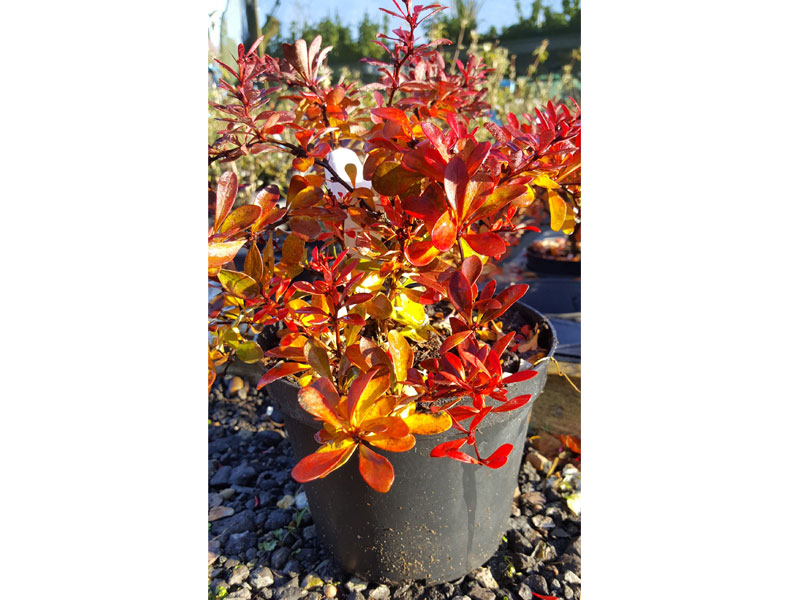Berberis thunbergii atropurpurea – Japanese Barberry

| Sizes Supplied | Item Price (£) + VAT | Type |
|---|---|---|
| 1.75 | P9 | |
Key: Type – P9 = Container Size | RB = Root Ball
Details / Key Facts
Berberis thunbergii atropurpurea Japanese Barberry, is a dense, deciduous, spiny shrub which grows 0.6 to 2.5m high. It has deeply grooved brown spiny branches with a single spine at each shoot node. The leaves are green to blue-green (reddish or purple in some horticultural variants), very small spatula to oval shaped. The flowers are pale yellow and around 5–8mm in diameter, produced in drooping 1-1.5cm long umbrella-shaped clusters of 2 to 5. Flowering is from mid spring to early summer. The edible fruit is a glossy bright red to orange-red, ovoid berry containing a single seed. They mature during late summer and fall and persist throughout the the winter.
Key Facts
- Common name: Burkwood Osmanthus
- Botanical name: Osmanthus burkwoodii
- Group: Small Hedge
- Flowering time: Spring
- Soil: Clay, Chalk, Sand, Loam
- Height and spread: 1-1.5 metres and 1-1.5 metres
- Aspect: South-facing or North-facing or West-facing or East-facing. Full Sun or Partial Shade
- Hardiness: Hardy
- Difficulty: Easy
How To Grow
Cultivation
Grows in any soil except waterlogged. A sunny position will encourage fruiting and autumn colour
Propagation
Propagate by seed or from semi-hardwood cuttings
Suggested planting locations and garden types
Low Maintenance Hedging & Screens Banks and Slopes Coastal Cottage & Informal Garden
Family
Berberidaceae
Genus
Burkwood Osmanthus, Osmanthus burkwoodii can be deciduous or evergreen shrubs with spiny shoots bearing simple, often spine-toothed leaves, and small yellow or orange flowers in axillary clusters or racemes, followed by small berries
Further Information
Burkwood Osmanthus, Osmanthus burkwoodii is a spiny medium-sized deciduous shrub of compact habit. Leaves obovate, 2-3cm, turning red and orange in autumn. Flowers solitary, yellow, flushed red on sepals. Glossy bright scarlet berries
Delivery charges may apply and will be based on the order size and location so, please provide us with as much information when you contact us with your enquiry.
If you would prefer to collect up your order please email sales@langleyhorticulture.co.uk to make an appointment.
Please note that payments cannot be made online. A member of staff will call you and take payment over the phone.
